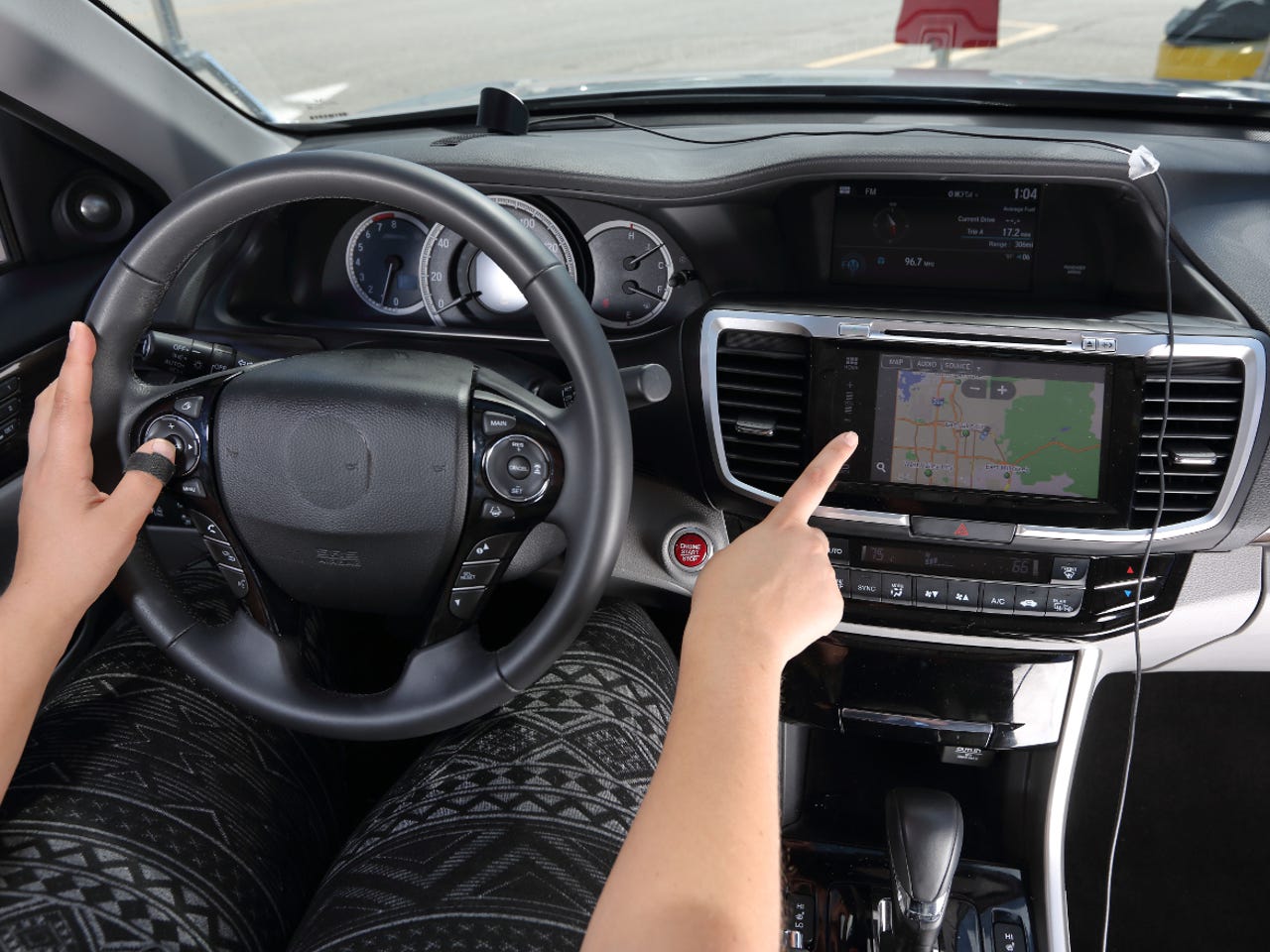Car infotainment is 'too dangerous' to use driving: So what's riskier, voice or buttons?


Programming navigation is the most distracting task, taking drivers on average 40 seconds to complete.
In-vehicle voice-based and touchscreen features are too mentally taxing to be considered safe to use while driving, according to a new study by the University of Utah commissioned by the AAA Foundation for Traffic Safety.
The most distracting task is navigation, taking drivers' attention away from the road ahead for more than 40 seconds at a time on average.
The study also found that using voice commands is more demanding than using the touch screen and buttons on a dashboard. Voice interactions took on average 30 seconds.
"Using voice-commands to control infotainment system functions resulted in lower levels of visual demand than the other modes. However, the benefits of reduced visual demand were offset by longer interaction times," the study notes.
A previous AAA study found that using voice commands on a smartphone was more distracting than talking on a smartphone while driving.
The new study, conducted by researchers at the University of Utah's School of Social and Behavioral Sciences, assessed 30 2017 model vehicles' infotainment systems and the performance of 120 participants on a residential road with a speed limit of 25 mph.
Participants were given a chance familiarize themselves with the road and vehicle's system,and then asked to call, send a text message, tune the radio or program navigation while driving.
The study looked at what the most taxing task is while driving, what it physically and mentally takes to complete a task, and how these demands vary across vehicle systems.
None of the 30 vehicles tested places a low demand on the driver's attention, while only seven vehicles systems cause a moderate demand. The remaining 23 cause high or very high demand.
AAA is critical of manufacturers enabling features unrelated to the core task of driving, such as sending a text message and checking social media. It also found that some features such as setting navigation with voice doesn't work, causing frustration and further distractions.
"Drivers want technology that is safe and easy to use, but many of the features added to infotainment systems today have resulted in overly complex and sometimes frustrating user experiences for drivers," said Marshall Doney, AAA's president and CEO.
"Automakers should aim to reduce distractions by designing systems that are no more visually or mentally demanding than listening to the radio or an audiobook. And drivers should avoid the temptation to engage with these technologies, especially for non-driving tasks," said Doney.
The AAA urges automakers to design systems so as to block text messaging, social media and programming navigation while the car is in motion. This block is recommended by the National Highway Traffic Safety Administration but is merely part of voluntary guidelines.
Psychology professor David L Strayer, who led the research, told the Salt Lake Tribune that car makers should be looking at what should be available in cars, not what could be.
"Right now, it's almost anything goes. As soon as someone figures how to do it, they put it in the car."
The AAA spells out some of the hazards of distracting infotainment systems.
Source: AAA/YouTube
Previous and related coverage
No dodging that conference call now: Volvo adds in-car Skype for Business, will test Cortana too
Volvo will test out Cortana to add voice recognition and predict the needs of drivers.
Adobe announces capabilities for personalised in-car ads
Brands will be able to use in-car app data to deliver personalised ads to drivers while they're en route.
Kakao, Hyundai to cooperate on in-car speech recognition
Kakao will cooperate with Hyundai Motor and Kia Motors to apply server-based speech recognition technology in cars using the firm's artificial intelligence (AI) platform, Kakao I.
More on incar technology
- Ford CEO Hackett: Digital transformation means making the business fit first
- Why Ford is test-driving Microsoft's HoloLens globally for faster car design
- BMW, Mercedes end 'Titan' car project negotiations with Apple: Report
- General Motors OnStar tunes into IBM's Watson AI to sell you stuff in your car